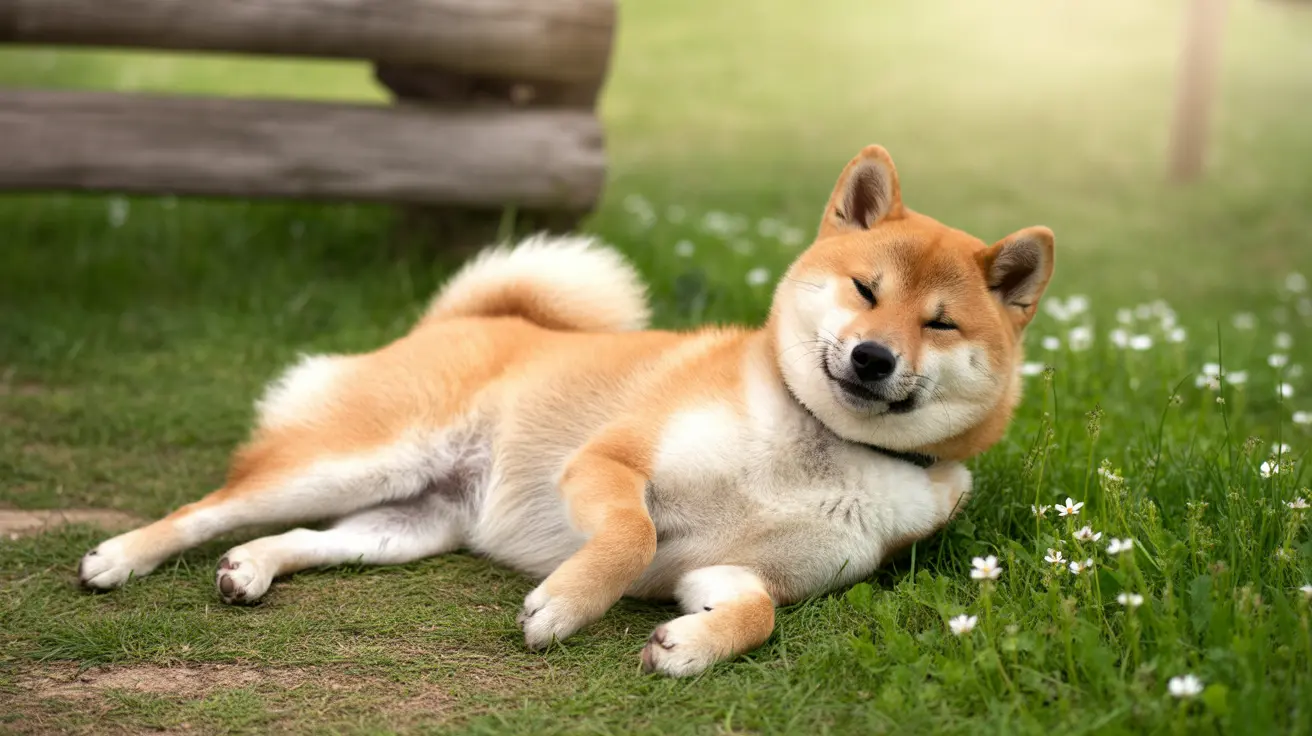Ever wondered why your dog sleeps in peculiar positions? From sprawling on their back to curling up in a tight ball, each sleeping position tells a unique story about your dog's comfort, emotional state, and overall well-being. Let's explore the fascinating world of dog sleeping positions and what they reveal about your furry friend.
As pet parents, understanding these sleep patterns can provide valuable insights into our dogs' health, happiness, and sense of security. This comprehensive guide will help you decode your dog's favorite sleeping positions and learn what they mean for their physical and emotional wellbeing.
Common Dog Sleeping Positions Decoded
The Side Sleeper
When your dog sleeps on their side with legs extended, they're displaying ultimate comfort and trust. This position exposes vital organs, indicating they feel completely safe in their environment. Side sleeping also allows for the most restful sleep, as your dog can easily enter REM sleep and even dream.
The Superman Sprawl
Often seen in puppies and energetic dogs, the "Superman" position involves lying flat on the stomach with legs stretched forward and backward. This position allows dogs to cool down while staying ready for action. It's particularly common during warm weather or after playtime.
The Donut Curl
When dogs curl up nose-to-tail in a tight ball, they're engaging in an ancestral behavior designed to protect vital organs and conserve body heat. This position is especially common during cold weather or when dogs feel slightly unsure about their surroundings.
The Science Behind Sleep Positions
Dogs spend 12-14 hours a day sleeping, making their choice of sleep position significant. Their sleep patterns are influenced by various factors:
- Temperature regulation
- Environmental security
- Physical comfort
- Emotional state
- Health conditions
Health Indicators in Sleep Positions
Changes in sleeping positions can sometimes signal health issues. Pay attention if your dog:
- Suddenly changes their preferred sleep position
- Consistently sleeps with their head elevated
- Shows difficulty getting comfortable
- Exhibits unusual breathing patterns during sleep
Creating the Perfect Sleep Environment
Support your dog's preferred sleeping style by providing appropriate bedding options:
- Flat, spacious beds for side sleepers
- Donut beds for curlers
- Cooling mats for belly-up sleepers
- Orthopedic support for senior dogs
Frequently Asked Questions
Why do dogs sleep in different positions, and what do these positions reveal about their mood and comfort?
Dogs choose different sleeping positions based on their comfort level, temperature needs, and emotional state. For example, sleeping on their side indicates trust and relaxation, while curling up might signal a need for warmth or security.
How can I determine if my dog's sleeping position is a sign of health issues or discomfort?
Watch for sudden changes in preferred sleeping positions, difficulty getting comfortable, or unusual breathing patterns. If your dog consistently sleeps in unusual positions or shows signs of discomfort, consult a veterinarian.
What are the best ways to create a comfortable sleeping environment for my dog based on their preferred sleeping position?
Provide appropriate bedding that matches their preferred position, maintain comfortable room temperature, and ensure the sleeping area is quiet and secure. Consider orthopedic beds for older dogs or cooling mats for those who often sleep belly-up.
Can changes in my dog's sleeping position indicate underlying emotional or psychological issues?
Yes, significant changes in sleeping positions can indicate stress, anxiety, or discomfort. Dogs feeling insecure might switch from exposed positions to more protective ones, like the curled-up position.
How do factors like weather and age influence a dog's choice of sleeping position?
Weather significantly impacts sleep positions - dogs often stretch out in warm weather to cool down and curl up in cold conditions. Age affects both sleep duration and position preference, with senior dogs typically needing more supportive surfaces for comfort.
Understanding your dog's sleeping positions helps you better care for their physical and emotional needs. By paying attention to these silent signals, you can ensure your furry friend gets the quality rest they need while staying alert to any potential health concerns.






